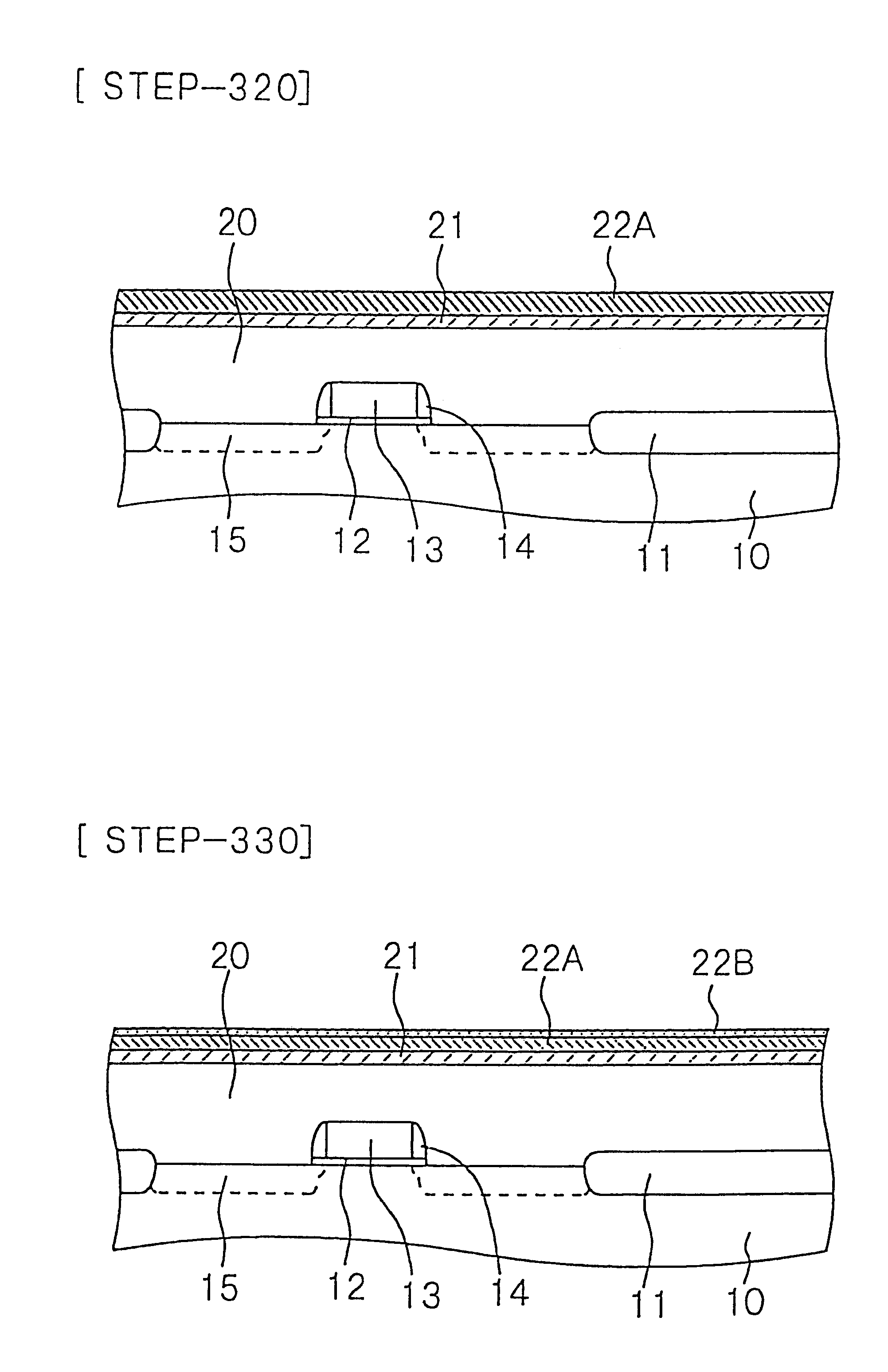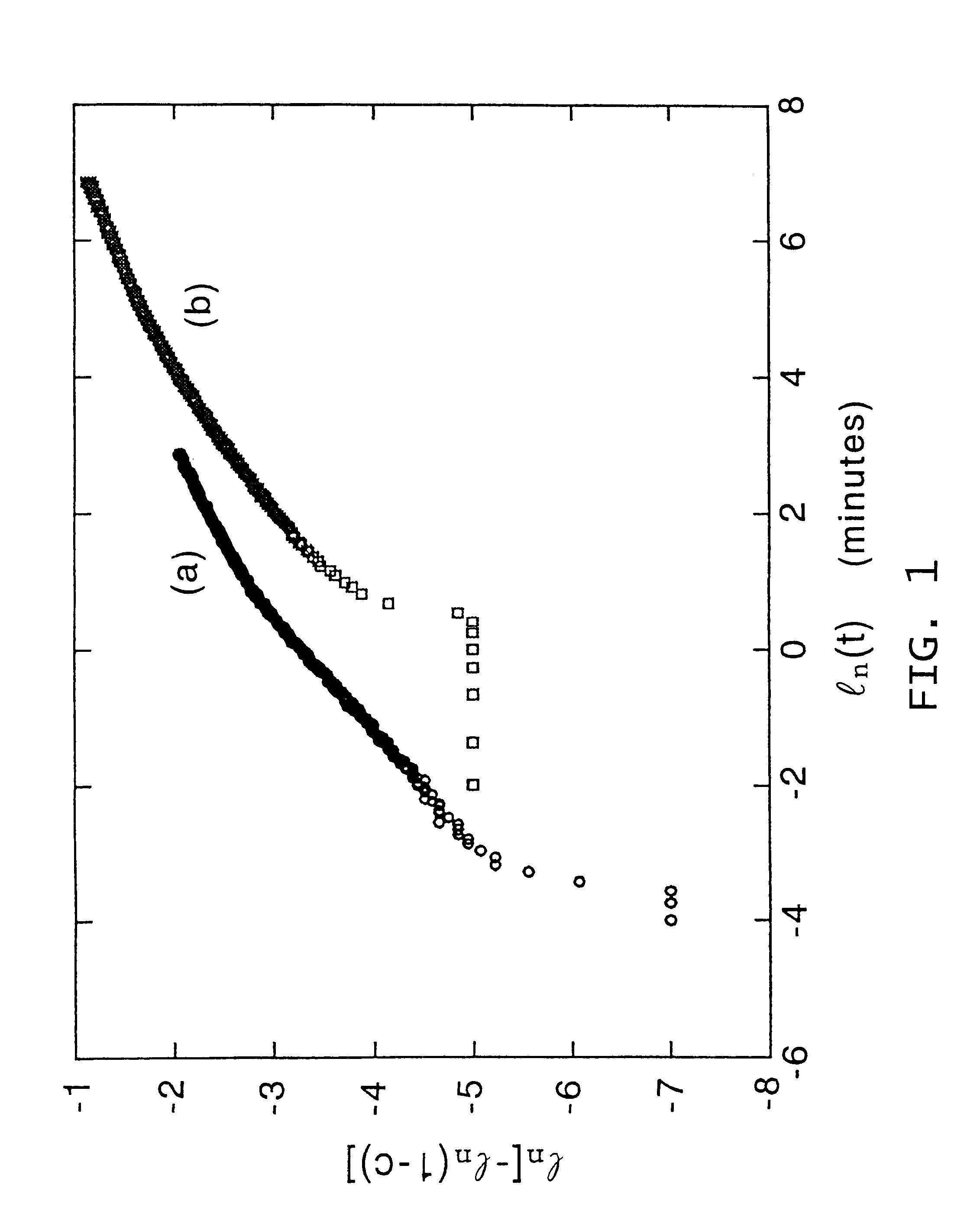Process for the manufacturing of oxide electrodes for ferroelectric capacitor
a ferroelectric capacitor and oxide electrode technology, applied in the field of electrochemical processes of ferroelectric capacitors, can solve the problems of dielectric capacitor deformation, poor processability, and impaired flatness of the lower electrode surface,
- Summary
- Abstract
- Description
- Claims
- Application Information
AI Technical Summary
Benefits of technology
Problems solved by technology
Method used
Image
Examples
example 2
In Example 2, metal oxide layers were formed by heat-treating Ru metal single-crystal powders by holding them in (A) a 0.1 MPa oxygen atmosphere (oxygen gas concentration: 100% by volume), (B) a 0.02 MPa oxygen atmosphere (oxygen gas concentration 20% by volume, nitrogen gas concentration 80% by volume), and (C) a 0.004 MPa oxygen atmosphere (oxygen gas concentration: 4% by volume, nitrogen gas concentration: 96% by volume), at 1083 K for t minutes and thereby oxidizing the surface of each Ru metal single-crystal powder.
FIG. 3 shows the obtained relationship between t and C. In FIG. 3, the axis of ordinates shows ln{-ln(1-C)}, and the axis of abscissas shows ln(t) (unit: minute). In FIG. 3, "(a)" indicates data obtained when the oxygen atmosphere was set at 0.1 MPa, "(b)" indicates data obtained when the oxygen atmosphere was set at 0.02 MPa, and "(c)" 1 indicates data obtained when the oxygen atmosphere was set at 0.004 MPa. The data "(a)" to "(c)" in FIG. 3 show that graphs can ap...
example 3
In Example 3, an electrode for a capacitor for a semiconductor memory cell is prepared according to the process for the manufacture of an electrode for a capacitor and the process for the manufacture of the capacitor, provided by the present invention. The capacitor is composed of two electrodes and a capacitor insulation layer formed of a dielectric film (ferroelectrics film) sandwiched between the two electrodes. More specifically, the capacitor is composed of a lower electrode, a capacitor insulation layer formed of a ferroelectrics film formed on the lower electrode and an upper electrode formed on the capacitor insulation layer. In Example 3, a semiconductor memory cell is a so-called planar RAM, and the capacitor has the form of a flat plate. The process for the manufacture of an electrode for a capacitor and the process for the manufacture of the capacitor, provided by the present invention, will be explained with reference to FIGS. 4A to 7B hereinafter.
[Step-300]
First, a MOS...
example 4
In Example 4, a so-called stacked type RAM is manufactured according to the process for the manufacture of a capacitor, provided by the present invention. A capacitor has the form of a flat plate. The process for the manufacture of a capacitor for a semiconductor memory cell in Example 4 will be explained with reference to FIGS. 8A, 8B and 9 hereinafter.
[Step-400]
First, a MOS transistor is formed on a semiconductor substrate 10 in the same manner as in Step-300 in Example 3.
[Step-410]
Then, a first insulating interlayer of SiO.sub.2 is deposited by a CVD method, and then, an opening portion 16 is formed in the first insulating interlayer on one source / drain region 15. A polysilicon layer doped with an impurity is deposited on the first insulating interlayer including an inner surface of the above opening portion 16. Then, the polysilicon layer on the first insulating interlayer is patterned to form a bit line 17. Thereafter, a second insulating interlayer of BPSG is deposited on an e...
PUM
 Login to View More
Login to View More Abstract
Description
Claims
Application Information
 Login to View More
Login to View More - R&D
- Intellectual Property
- Life Sciences
- Materials
- Tech Scout
- Unparalleled Data Quality
- Higher Quality Content
- 60% Fewer Hallucinations
Browse by: Latest US Patents, China's latest patents, Technical Efficacy Thesaurus, Application Domain, Technology Topic, Popular Technical Reports.
© 2025 PatSnap. All rights reserved.Legal|Privacy policy|Modern Slavery Act Transparency Statement|Sitemap|About US| Contact US: help@patsnap.com



